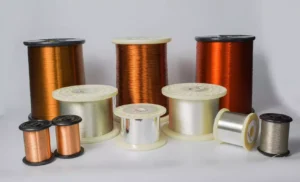Your fan may not cool well due to wrong placement, dust build up, wrong speed, wrong size, or parts wear.
By checking these issues and cleaning or adjusting settings, you can restore airflow and comfort.
Keep reading. We will cover each cause. You will learn clear steps to boost airflow and stay cool.
Fan Placement and Direction
Fans need space and correct direction to push air well. Placing a fan by an open window helps swap indoor and outdoor air. Point it at you or towards the room center to boost cooling effect.

Why placement matters
A fan works by moving air from one side to the other. If it sits against a wall or in a tight corner, it can only push air into the wall or furniture. This blocks airflow and wastes motor power. Giving a fan room on all sides lets it pull in air easily and send it forward in a strong stream.
How to set direction right
Most portable fans and floor fans tilt. Point the fan slightly upward if you want stronger circulation across a room. For a direct breeze, aim the front face toward your seating or sleeping area. In summer, point the fan inward at an open window to draw cooler air inside. In cooler months, reverse the motor (if possible) to push warm air down from the ceiling.
| Placement Option | Effect |
|---|---|
| Near open window (in) | Brings fresh air from outside |
| Near open window (out) | Pushes hot indoor air outside |
| Center of room | Circulates air evenly |
| Corner of room | Blocks airflow, lowers efficiency |
Obstructions and Clutter
Obstacles like furniture, curtains, or laundry block airflow. Clearing space within two feet around the fan lets air move smoothly. This simple fix can improve cooling by up to 30%.

Common blockages
Items like chairs, tables, or clothes can sit in a fan’s path without you noticing. Even a small stack of magazines on the floor can reduce airflow. Check on both sides of the fan: intake side (back) and output side (front). Look for anything within two feet of the blades or grille.
Clearing the path
Move furniture and clutter at least two feet away. Roll up curtains or blinds that hang in front of the fan. If you use a box fan, keep it on a stand or table so it draws air from a clear level. You can also reposition rugs or mats so they don’t trap cool air below.
| Obstruction | Why It Matters | Action |
|---|---|---|
| Furniture | Stops airflow | Move two feet away |
| Curtains or drapes | Flap into blades | Tie back or lift above blades |
| Laundry or boxes | Block front grille | Store elsewhere |
| Rugs or mats | Trap low cool air | Keep clear space around base |
Clearing space is free and fast. You do not need tools. Just look around and move items out of the way. After you clear, turn on the fan. You should feel a stronger breeze right away. If not, move on to the next step.
Dirty Blades and Grilles
Dust and grime build up on blades and grilles. This layer cuts airflow and strains the motor. Wiping parts with a damp cloth every month restores full airflow and keeps air clean.

Impact of dust
Even a thin film of dust reduces airflow by about 10%. Over time, dirt can slow blade rotation and overheat the motor. Dust can also carry allergens, making air quality worse. A dirty fan spreads particles around the room rather than moving clean air.
Cleaning steps
- Unplug the fan. Always cut power first.
- Disassemble grille. Most fans twist or clip open.
- Wipe blades. Use a damp microfiber cloth. Avoid wetting motor parts.
- Clean grille. Wipe or rinse, then dry completely.
- Reassemble and test. Make sure parts fit snugly.
| Task | Frequency |
|---|---|
| Blade wipe | Monthly |
| Full grille rinse | Every 3 months |
| Motor check | Every 6 months |
Regular cleaning is safe and easy. It only takes ten minutes. A clean fan moves air faster. It also lasts longer and uses less power.
Fan Speed and Settings
Most fans have several speed levels and a reverse mode. Use higher speed on hot days. In winter, use reverse to push warm air down. Adjust settings to match your comfort needs.

Choosing speed
Lower speeds save energy but give less breeze. High speed gives more airflow but can feel too strong. Start at medium. Move up or down until you feel a smooth, steady flow.
Using reverse mode
Some fans have a switch under the motor. In summer, blades should spin counterclockwise to push air down. In winter, flip the switch so blades move clockwise. This draws cool air up and forces warm air down.
| Setting | Airflow Effect |
|---|---|
| Low | Gentle breeze |
| Medium | Steady airflow |
| High | Strong breeze |
| Reverse (winter) | Pushes warm air down |
Experiment with each speed. Notice sound level too. High speed can be noisy. If noise bothers you, use medium speed and point fan closer to you.
Fan Size and Power
A fan that is too small can’t move enough air. One that is too large may use too much power. Choose blade span based on room square footage for best airflow and comfort.

Matching room size
Measure room area in square feet (length × width). Then pick blade span:
| Room Size (sq ft) | Blade Span |
|---|---|
| Up to 75 | 29–36 inches |
| 76–144 | 36–42 inches |
| 145–225 | 44 inches |
| Over 225 | 52 inches or more |
Motor power
A strong motor can spin blades faster against air resistance. Look for fans with higher CFM (cubic feet per minute). Aim for 1,500–3,000 CFM for living rooms. For small bedrooms, 1,000–1,500 CFM is enough.
Choosing the right size and power cuts noise. It also saves energy. Always check specs before you buy. If you already have a fan, measure blade span and compare it to room area. If it is too small, consider an upgrade. If you have a big fan in a small room, use a lower speed.
Air Conditioning and Ventilation
Without fresh air or AC, a fan only recirculates warm indoor air. Open windows for a cross breeze or pair your fan with AC to boost cooling efficiency and comfort.

Ventilation basics
Good ventilation brings in cool air and sends out warm air. Open windows on opposite walls to create a cross breeze. Use exhaust fans in kitchens and baths to pull stale air out.
Combining AC and fans
A fan helps an AC unit cool faster. It moves cold air from vents across the room. This lets you raise AC thermostat by a few degrees. You save energy but still feel cool.
| Method | Benefit |
|---|---|
| Cross-ventilation | Free and simple cooling |
| Exhaust fan | Removes warm, moist air |
| AC plus fan | Speeds cooling, saves energy |
In hot climates, run AC at highest comfortable setting. Use fan on high speed to spread cool air. Turn off fan when you leave room to save power. Good ventilation also cuts down humidity.
Mechanical Issues and Maintenance
Wobbling, loud noise, or slow start can signal worn bearings or loose blades. Regular checks and timely repairs keep your fan running smoothly and safely for years.

Signs of wear
- Wobble: Blades out of balance or loose screws.
- Noise: Dry bearings or motor strain.
- Slow start: Faulty capacitor or motor issues.
When to call a pro
Minor fixes like tightening screws or oiling bearings you can do yourself. For motor repair, electrical faults, or internal parts, hire a trained technician. They can replace parts and test safety.
| Symptom | Possible Cause | Action |
|---|---|---|
| Wobble | Loose blade screws | Tighten screws |
| Grinding noise | Dry bearings | Oil bearings |
| Doesn’t start | Bad capacitor | Replace capacitor |
| Weak airflow | Motor issue | Call technician |
Regular checks every six months catch small issues early. Turn off power and clean first. If you hear odd sounds or see parts wobble, fix or replace them right away. This stops bigger damage later.
Conclusion
Check placement, clean parts, clear clutter, set speed, match size, improve ventilation, and handle repairs promptly to keep your fan blowing strong.
FAQs
Why does my fan make a rattling noise?
Loose screws or bent blades often cause rattles. Turn off the fan and tighten all screws. If noise persists, inspect blades for damage or warping.
How high should a ceiling fan be mounted?
A ceiling fan should hang 7–9 feet above the floor. This height gives optimal airflow and safety. Adjust downrod length if needed for high ceilings.
Does blade pitch affect fan airflow?
Yes. Blade pitch is the angle of the blade. Steeper pitch (12–15°) moves more air. Too steep can strain the motor, so follow manufacturer specs.
Can I use a pedestal fan in a large room?
You can, but you may need two or more fans. Placing one near a window and one facing inward helps create a cross breeze and better coverage.
Is it safe to oil a fan motor?
Only oil if the motor has oil ports. Use lightweight machine oil and add a few drops per port. If no ports exist, consult the manual or a pro.
How often should I balance fan blades?
Check blade balance every six months. You can use a blade-balancing kit or tighten loose parts. Balanced blades run quieter and last longer.
Can a box fan replace an air conditioner?
No. A box fan only moves air; it doesn’t cool it. It can help circulate cool outdoor air or spread AC air, but it can’t lower room temperature alone.
Why does my fan use more power when dirty?
Dust buildup adds weight and drag. The motor works harder to spin blades, drawing more current. Cleaning blades and grille cuts power use and noise.






